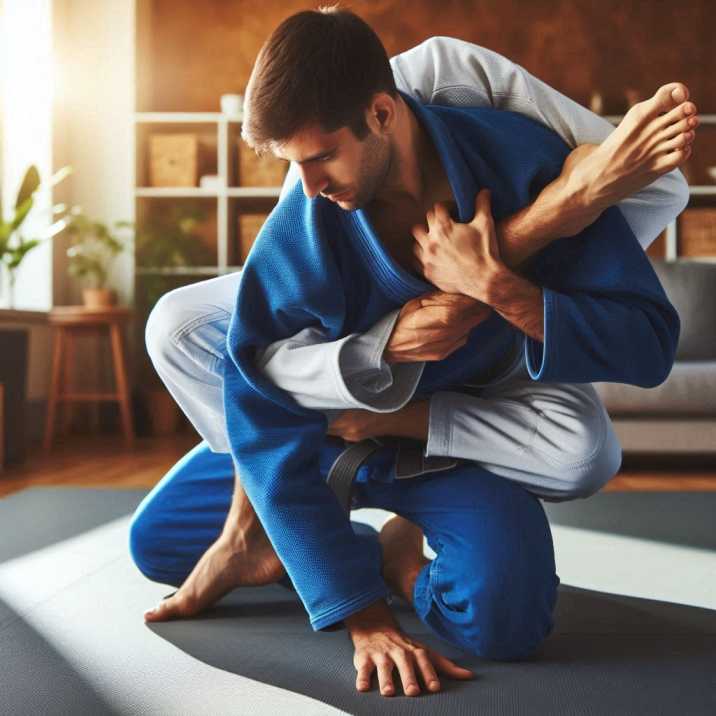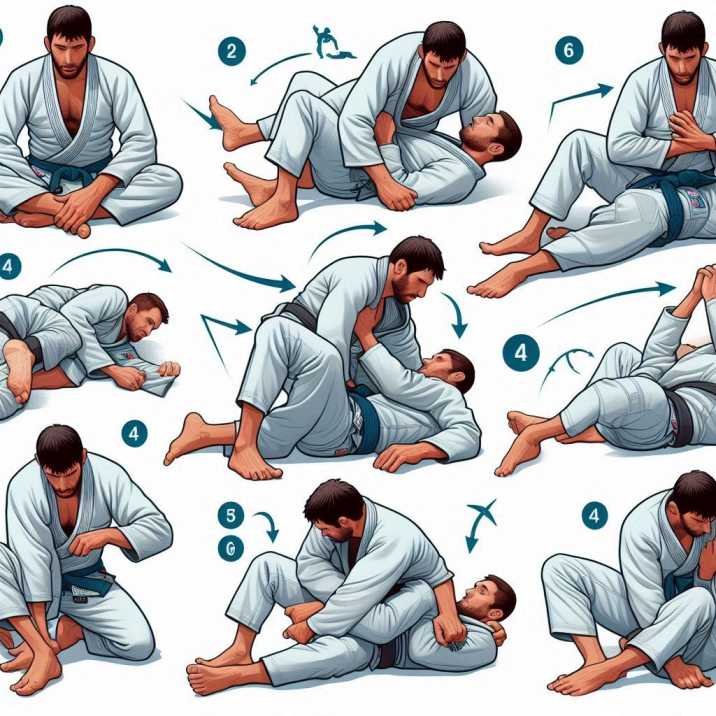Definition
Table of Contents
The Jiu Jitsu paralyze move is a technique used to immobilize an opponent by applying pressure to specific joints or muscles, effectively “paralyzing” their ability to move. This move is typically executed through a combination of joint locks and pressure points, making it a powerful tool in both competitive and self-defense situations.

Historical Background
The concept of immobilization in martial arts dates back to ancient techniques used in various cultures. Jiu Jitsu, with its origins in Japan, incorporates these traditional techniques, evolving them into modern practices. The paralyze move is a product of this evolution, reflecting the art’s focus on leverage and control rather than brute strength.
Techniques for Executing the Paralyze Move
Basic Steps

- Positioning
- Explanation: Positioning is the foundation of executing any Jiu Jitsu move effectively. Start by placing your body in a strong, balanced stance. This means standing with your feet shoulder-width apart and your weight evenly distributed. This stance provides stability and allows you to control the opponent better. Proper positioning ensures that you are grounded and less likely to be off-balance, which is crucial for applying the paralyze move effectively.
- Gripping
- Explanation: Gripping refers to how you hold onto your opponent’s limb or torso. A firm, controlled grip is essential for applying the paralyze move. You should aim to grasp your opponent’s arm, leg, or torso with precision. This means your grip should be secure enough to maintain control but not so tight that it risks causing injury. The goal is to apply pressure at specific points to immobilize the opponent without discomfort.
- Applying Pressure
- Explanation: The application of pressure is the core of the paralyze move. Once you have a firm grip, you use controlled force on the opponent’s joint or muscle. The pressure should be enough to cause discomfort and limit their movement, but not enough to cause pain or injury. This requires a delicate balance—too much pressure can lead to injuries, while too little may not be effective.
- Maintaining Control
- Explanation: After applying pressure, it’s crucial to maintain control over the move. This means continuously adjusting your position and grip to keep the opponent immobilized. As the opponent may attempt to resist or escape, you need to adapt your hold to ensure that the move remains effective. This might involve shifting your weight or adjusting your grip to respond to their movements.
Advanced Variations
- Combination Techniques
- Explanation: Combination techniques involve integrating the paralyze move with other Jiu Jitsu techniques to enhance its effectiveness. For example, you might combine the paralyze move with a throw or a joint lock. This can make the move more versatile and difficult for the opponent to counter. By using combinations, you can create a sequence of moves that keep the opponent off-balance and increase your control.
- Counter-Moves
- Explanation: Counter-moves refer to transitioning from the paralyze move to other techniques based on the opponent’s reactions. Once you have applied the paralyze move, the opponent might try to counter or escape. Learning how to seamlessly transition from the paralyze move to defensive or offensive positions, such as transitions into holds or strikes, allows you to maintain control and adapt to the opponent’s response. This skill is crucial for effective application in both training and competitive scenarios.
Benefits of the Jiu Jitsu Paralyze Move
Self-Defense Advantages
The Jiu Jitsu Paralyze Move is highly effective in self-defense situations, allowing you to neutralize a threat without causing serious harm. By immobilizing an attacker, you can protect yourself or others while minimizing the risk of escalation.
Training Benefits
Incorporating the paralyze move into your training regimen helps improve your overall grappling skills. It enhances your ability to control opponents and adapt to different scenarios, making you a more versatile practitioner.
Safety Tips for Practicing the Jiu Jitsu Paralyze Move
Warm-Up and Stretching
Before practicing the Jiu Jitsu Paralyze Move, always perform a thorough warm-up and stretching routine. This helps prevent injuries and prepares your muscles and joints for the physical demands of the move.
Partner Communication
Effective communication with your training partner is crucial. Clearly discuss the techniques and any potential discomfort before starting. This ensures a safe and productive practice session.
Common Mistakes and How to Avoid Them
Overuse of Force
One common mistake is applying too much force, which can lead to injuries. Focus on using controlled pressure and proper technique rather than relying on strength.
Improper Technique
Ensure that you are using the correct technique for the paralyze move. Incorrect execution can reduce effectiveness and increase the risk of injury. Seek guidance from experienced instructors and practice regularly to improve your skills.
Conclusion
The Jiu Jitsu paralyze move is a powerful technique that highlights the art’s emphasis on control and leverage. By understanding its execution, benefits, and safety measures, practitioners can enhance their skills and effectiveness in both training and real-world scenarios. Remember, mastery of this move requires practice, patience, and adherence to safety guidelines. Keep honing your skills, and you’ll find the paralyze move to be a valuable addition to your Jiu Jitsu toolkit.
FAQs
1. What is the purpose of the Jiu Jitsu paralyze move?
The paralyze move is designed to immobilize an opponent by applying pressure to specific joints or muscles, allowing you to control or neutralize them effectively.
2. Is the paralyze move safe to use in training?
Yes, when practiced correctly with proper technique and communication, the paralyze move is generally safe. Always follow safety guidelines and listen to your training partner.
3. Can the paralyze move cause injury?
If executed with excessive force or improper technique, there is a risk of injury. It’s important to use controlled pressure and follow safety protocols.
4. How can I improve my execution of the Jiu Jitsu Paralyze Move?
Regular practice, feedback from experienced instructors, and focusing on proper technique will help improve your execution of theJiu Jitsu paralyze move.
5. Are there any other techniques similar to the paralyze move?
Yes, techniques such as joint locks and pressure points also aim to immobilize or control an opponent. These techniques can be integrated with the paralyze move for enhanced effectiveness.


